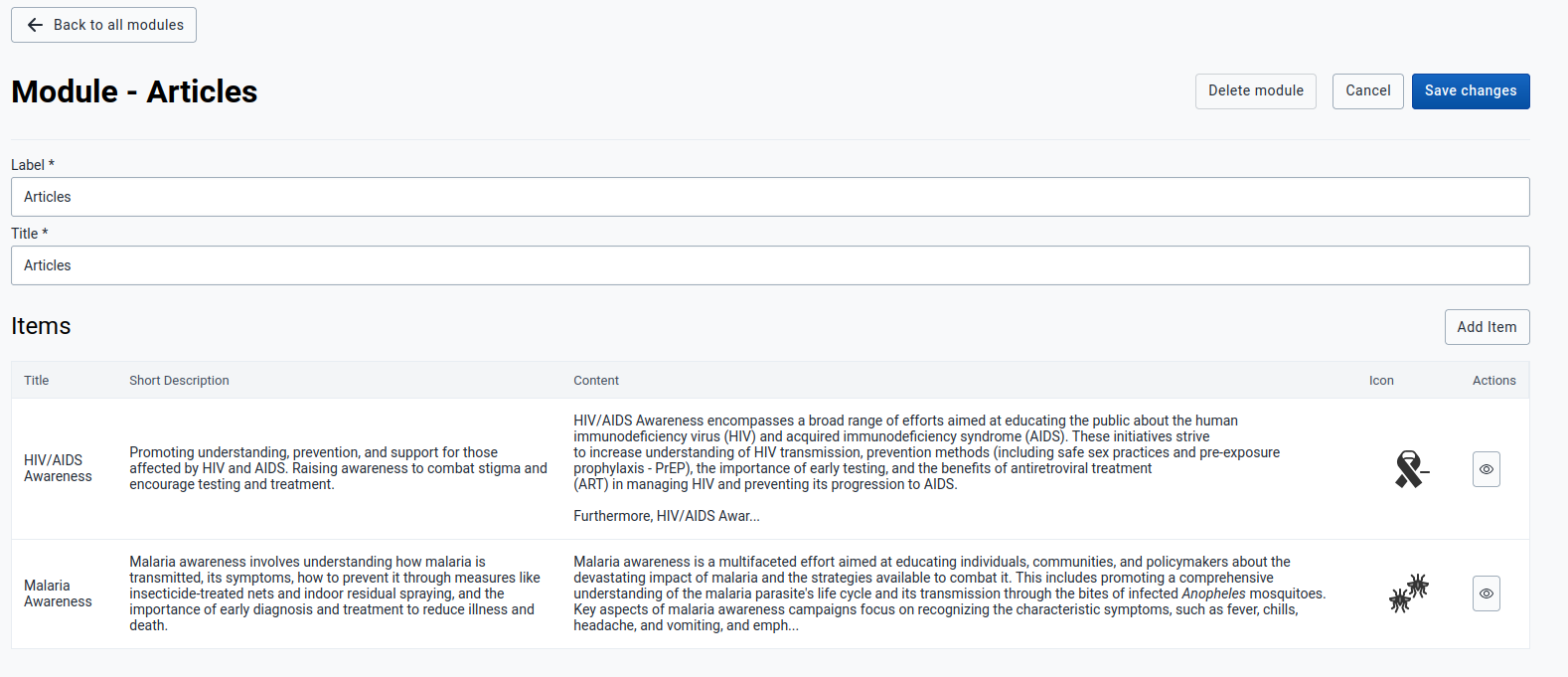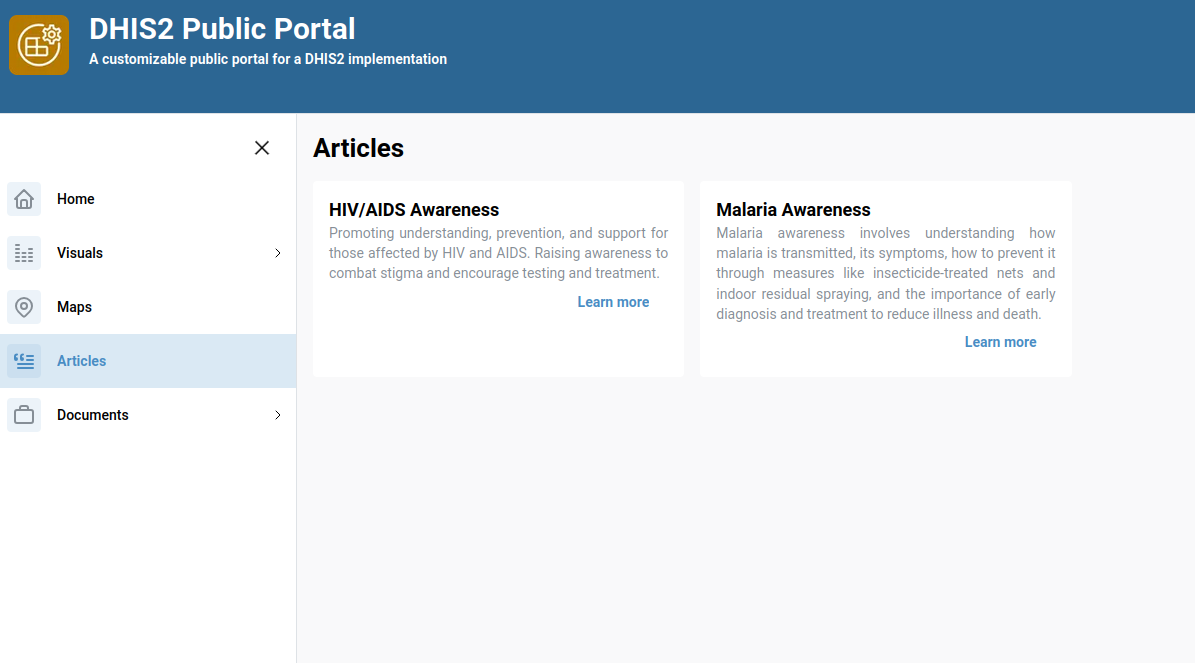Static Module
Overview
The Static Module enables users to create and manage content-focused pages like documentation articles, blog posts, or knowledge based entries.
Each static module can house multiple items, where each item represents an independent content entry such as an article or blog post.
This guide will walk you through how to create, configure, and manage a static module and its content items effectively.
1. Module Creation
Creating New Static Modules
Within the Modules Page click Create a new Module to begin. You will be prompted to enter:
- Label – User-friendly name for your module.
- Type – Module type
"Static". - ID – Auto-filled from the Label (used in the URL and must not contain spaces).
Click Create module to generate your static module and proceed to its configuration screen.
Module configuration
After module creation, you’ll be directed to the module page, where you can customize:
- Label: Module name
- Title: Page header title
Changes here affect how the module appears within the portal and should reflect the purpose of your content.
2. Item Management
Adding a New Item
Inside the static module configuration screen:
- Click Add Item to begin creating a content entry.
- Fill in:
- Title – The headline of your content.
- ID – Automatically filled from the title (e.g.,
getting-startedfrom "Getting Started").
Click Create Item to proceed.
Configuring a Static Item
After item creation, you'll be redirected to the item configuration screen. Here you can set:
- Short Description – A brief summary of the content.
- Content – The main body or article text.
- Icon – Upload an icon in svg format representing the item.
Edit or Delete
Each item can be edited or deleted. To apply your changes, always click:
Save Changes
After saving, you will be redirected back to the module overview page.
Example view:
Expected outcome:
4. Use Cases
Static modules are best used for:
- 📖 Documentation Pages – Add items like “How to Use”, “Getting Started”, etc.
- 📝 Blog Entries – Organize blog posts with rich content and icons.
- 📄 Informational Content – Pages like “About Us”, “FAQs”, “Policies”, etc.
Each item functions like a standalone article inside a module.
5. Summary
| Feature | Description |
|---|---|
| Create Module | Define label and static type |
| Add Items | Add articles with title, content, and icon |
| Save & Edit | Make changes and persist them |
| Multi-Item Support | Add unlimited items per module |
6. Best Practices
- Keep IDs simple and descriptive — no spaces.
- Use short descriptions for quick item overviews.
- Choose relevant icons and maintain consistent icon styling.
- Always Save Changes before navigating away.
7. Future Enhancements
Coming soon:
- Item reordering support
💡 Got ideas or suggestions? Reach out to the team to request new features!

